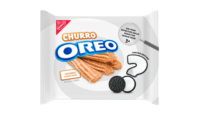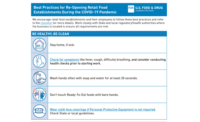Case closed


















New closing equipment for bags, cases and other packaging helps bakers and snack manufacturers ensure that products are intact, fresh and safe when consumers buy them. It also offers dependable, high-speed performance and accommodates today’s most popular closures.
New closing equipment is designed to help bakeries and snack food manufacturers give consumers what they want: Food packaging that’s easy to open and close and keeps products fresh. The equipment also operates at high speeds, provides tamper-evidence and is available with multi-language touchscreen controls, features important to food producers.
Users want more standup pouches and other types of flexible structures equipped with snap and/or zipper closures for convenience and marketing purposes, experts agree. These closures must not only provide product integrity and a degree of tamper-evidence, consumers must find them easy to use and reuse.
Bakeries and snack food producers are demanding easy-to-use closures that are inexpensive, resealable and able to display printed information, such as production codes and sell-by dates, says Steven Clements, vice president of Ben Clements and Sons Inc., South Hackensack, N.J. “They also want to use nonmetallic materials to avoid metal in food packaging and allow for use of metal detectors in microwave ovens,” he adds.
Reclosability ranks high
Reclosure continues to rank high in studies of packaging attributes important to consumers, according to Art Malcomson, director of sales and marketing, Zip-Pak, an ITW co., Manteno, Ill. “Consequently, marketers continue to focus on reclosures as a way to differentiate their packaging and provide consumer convenience,” he explains. “This trend is clearly evident in snack food products, as retail brands increasingly include a reclose feature on their packaging as way to set themselves apart.”
Demand for premade, laminated standup pouches is definitely on the rise, adds Christie Taraborelli, marketing manager, WeighPack Systems, Montreal. “Customers are looking to reduce waste, while improving storability and shelf impact,” she says. “Our Swifty Bagger for premade bags is designed to help them achieve these goals. It allows the user to run a variety of bag styles, including pillow, standup, gusseted and quad bags, with a zipper enclosure or a carrying handle.”
To meet marketplace demands, today’s closure equipment must operate at high speeds and produce informative labeling, according to Mitch Lindsey, technical sales director, Burford Corp., Maysville, Okla. As today’s plants are more and more streamlined for maximum output and sustainability, they require today’s equipment to be more reliable and operate more economically for longer hours.
Lindsey also agrees that tamper-evidence is still critical in packaging. “With our Tamper Evident Sealer (TEC200) and Tape Closure System (Model TCS-400M), we can accommodate these requests,” he says. “And for labeling, the new Burford Tagger provides point-of-purchase redemption coupons and works with the Burford Smart Servo Tyer. The tag is placed under a twist-tie during the closing process and is easily removed for use at checkout, with no effect on the closure.”
Kwik-Lok Corp., Yakima, Wash., recently introduced the 893 Ultra bag closer, which closes 110 bags per minute and features a touchscreen for easy operation, according to Gary Ellington, western division sales manager. The touchscreen can function in multiple languages.
“The 893 Ultra can be fitted with the new 901 printer by Squid Ink, which prints up-to-the-second information—line number, operator, batch number, shift, ‘best-by’ date or other information needed by a bakery,” he explains. “Bakery formats are stored on the touchscreen to be recalled by the operator as needed. The printer has only one moving part—the encoder—and can print one million imprints using one cartridge. The computerized formats eliminate coding errors due to human miscalculations.”
WeighPack Systems recently introduced the Swifty Junior, a compact machine that automates the premade pouch-bagging process. It can operate on a variety of bag styles and offers features such as an Omron PLC (programmable logic controller) touchscreen and “no bag, no fill” sensors. “While automation for premade bagging can be out of reach for smaller bakery and snack food plants, the Swifty Junior gives these companies that capability,” says Taraborelli.
Burford Corp. recently unveiled the EL54C, an entry-level tyer with a fixed operating speed of 35 packages per minute, for small to midsize bakeries. “The EL54C is a tyer/conveyor system that helps automate the packaging line,” Lindsey says.
In recent years, Zip-Pak has introduced several bag-closure solutions. “Pour & Lok is a package format where the zipper is placed on only one side of the package, which provides a handy pour spout as well as easy reclose of the package,” says Malcomson. “Zip360 takes that one step further by utilizing an easy-to-close, multi-align reclosure 360 degrees around the top of the package, thus giving the consumer full access to the contents as well as easy reclosure. Zipbox is another new package format, which offers the convenience of a carton, but with the top of the package made from resealable film.”
Growing issues
Bakeries and snack food producers are seeking package reclosure more so now than in previous years, say experts. “While the idea of package reclosure has always been popular with consumers, it hasn’t been widely seen on bakery and snack food packaging,” Malcomson explains. “Increasingly, however, reclosure is seen as an attractive and cost-effective way to add quality and convenience to packaging. More than ever, producers are looking for ways to integrate reclosure and differentiate their products.”
Mark Crush, vice president business development, at Infinium Printing LLC, Louisville, Ky., a manufacturer of printed film, bags and pouches, has seen an increase in zipper- and Velcro-type bag closures. “Product visibility continues to be a growing concern,” he says. “A product needs to be seen clearly at the retail level. That is why we introduced new high-resolution films to be used with bag-closure systems.”
H.B. Fuller, St. Paul, Minn., is an adhesive supplier that works with bag-closure equipment manufacturers to develop adhesives best suited for their machines.
“In addition, closures must be accessible and usable by the entire population of end-users, with a large focus on the aging population,” Joe Tuso, business director, explains. “The adhesive plays an important role in the closure system. The increasing use of a variety of substrates, including metalized films and adhesion to heat-sealable film, are the biggest challenges for adhesive suppliers.”
Looking ahead, consumers will continue to demand packaging that’s innovative, convenient and even interactive. The newest bag-closure equipment is designed to meet these demands, according to Ellington. “We can put a ‘sell-by’ date on the closure so it is always in the same place,” he says. “We also provide a way to add value by incorporating a coupon or recipe on the closure itself. Also, more product variety is popular. The latest equipment is able to switch from one product to another on the same production line, quickly and without special tools.”
Today’s on-the-go consumers are increasingly wanting healthier alternatives, available in more sizes and package styles. “We see our bakery and snack food customers offering a wider array of healthy products, often produced from organic raw materials and using healthy processing such as baking versus frying,” says Malcomson. “This host of new products, flavors and packages requires increased flexibility in production capability, a positive development for contract packaging companies that are able to offer a wider array of sizes and types of packages and products.”
Taraborelli sees more turnkey solutions down the road, which is an opportunity for growth in this market. “We’re receiving a lot of requests for complete packaging solutions, meaning integrated conveyors, fillers, baggers, and case or tray formers,” she says.
Looking for a reprint of this article?
From high-res PDFs to custom plaques, order your copy today!

















